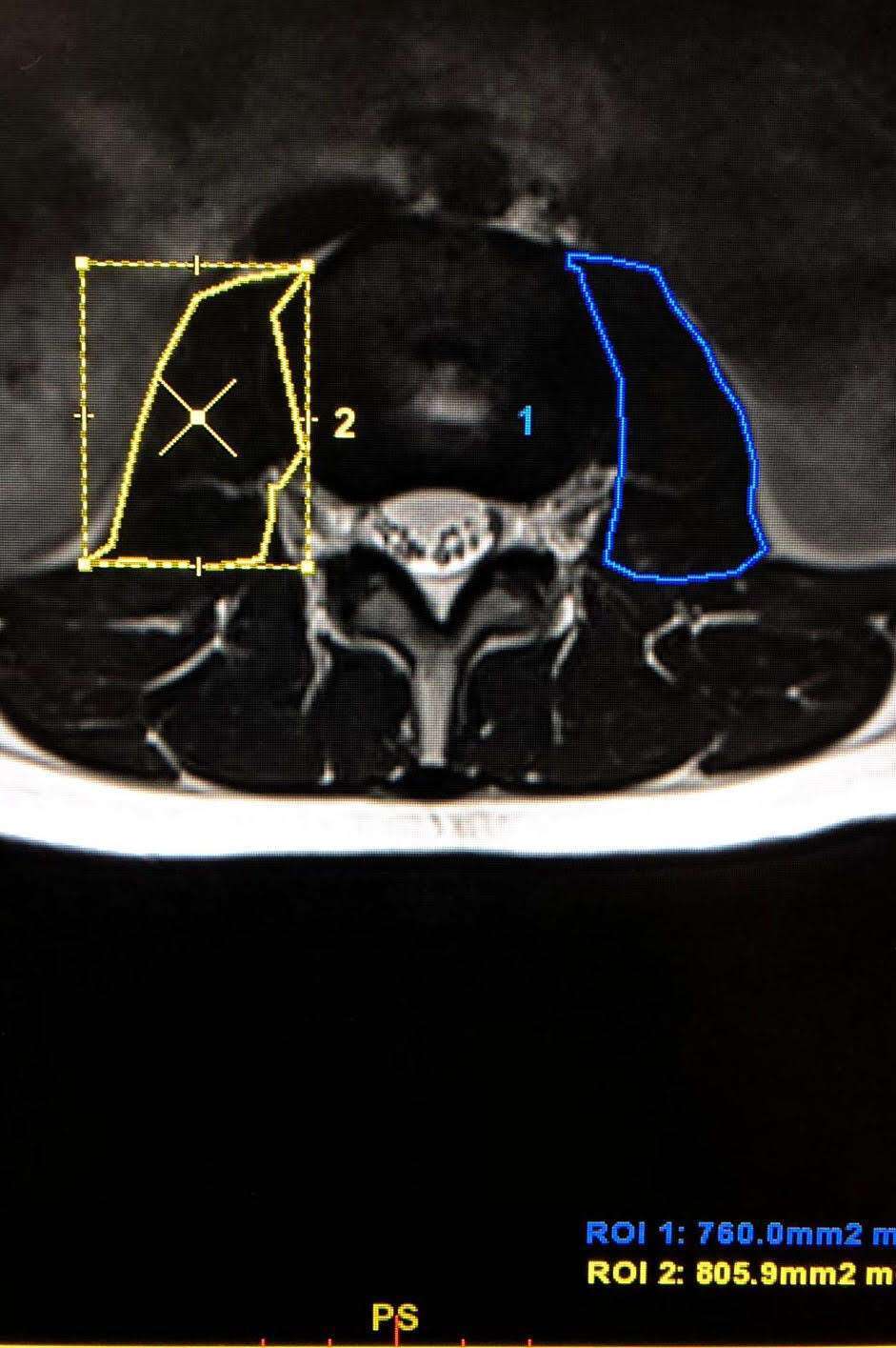Purpose: Inflammatory bowel disease (IBD) is a chronic immune-mediated disease with high impact on nutritional status. In recent studies regarding adult IBD, sarcopenia was related to a poor disease outcome. The aim of this study was to evaluate the significance of sarcopenia in pediatric IBD population.
Material & Methods: A retrospective-single-center-study was conducted during 2019. We included all pediatric patients that were diagnosed with IBD from 2008 to 2019 in our hospital, and underwent an MRI study during that period. Muscle mass was assessed by measuring the area of the psoas muscle on axial MRI images by a freehand ROI, at the level of L3 vertebra (Fig. 1).
Other radiological findings were documented, including – length and type of inflamed bowel (small bowel and/or colon), and complications of disease (intestinal and extra-intestinal).
During the follow-up period of up to 10 years, clinical and laboratory data was documented.
Pediatric patients with a normal lumbar spine MRI and no history of IBD served as a control group.
Statistical analysis was used to analyze the correlation of sarcopenia with severity of disease and radiological findings on MRI studies, compared to a healthy control group.
Results: In the hospital-wide screening process 285 patients were screened and finally 94 pediatric IBD patients were included, that had sufficient abdominal MRI data in the data base of the hospital.
Patients in the control group (n=25) had a significantly higher psoas area compared to the study group (p>0.001), with an average psoas area of 1073.9 mm 2 ± 227.5 compared to 530.7 mm 2 ± 270.6, respectively. Pediatric IBD patients with no radiological evidence of intestinal inflammatory changes showed a significantly higher psoas area than patients with signs of bowel inflammation (p<0.05). Patients with involvement of both, small and large bowel, showed a significantly higher degree of sarcopenia (a mean muscle mass of 386.65mm2 ±187.2), compared to patients with involvement of either small or large bowel (mean 509.3mm2 ±210.5), (p<0.05).
Conclusion: Sarcopenia in children with IBD correlates with severity of disease. Pediatric IBD patients showed a lower muscle mass, independent of degree of bowel inflammation, compared to healthy controls. Moreover, the degree of sarcopenia was directly related to the presence of radiographic findings of intestinal inflammation and to the extent of bowel involvement. Therefore, it is suggested to assess sarcopenia in the routine interpretation of MRI studies of pediatric IBD patients, as a possible marker for disease severity.


